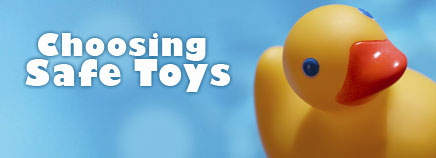How to Choose Toys for a Child
August 02,2013
From: ABC sources
-
Toys are the treasures of childhood. Choosing toys for children might seem simple, but when you take into account that, when chosen with care, a toy can offer an opportunity for a child to learn something, but can also be a serious health hazard. With the overwhelming amount of children's toys available to consumers currently, choosing toys for children can be confusing or intimidating, but when you know how to select toys for their amusement and educational values, as well as for safety, durability, and pricing, you can quickly find the right toys for the child. Read the following steps to find out how to choose toys for children.
\r\n\r\n
\r\n- \r\n
- 1.Pick age-appropriate toys. Most toys show a "recommended age" sticker, which can be used as a starting point in the selection process. Be realistic about your child's abilities and maturity level when choosing an age-appropriate toy. Toys that have projectiles, for example, are never suitable for a child under age 4 – and even some 6-year-olds aren't mature enough to handle them. Likewise, if your 3-year-old still puts everything into his mouth, wait a little longer to give him toys and games with small parts and pieces. \r\n
- 2.Choose toys that are well-made. Used toys passed down from older relatives or siblings or bought at yard sales can be worn or frayed, which can sometimes be dangerous. Check all toys – new or used – for buttons, batteries, yarn, ribbons, eyes, beads, and plastic parts that could easily be chewed or snapped off. Make sure a stuffed animal's tail is securely sewn on and the seams of the body are reinforced. Parts on other toys should be securely attached. Make sure there are no sharp edges and the paint is not peeling. \r\n
- 3.Think big. Until your child turns 3, toy parts should be bigger than his mouth to prevent the possibility of choking. To determine whether a toy poses a choking risk, try fitting it through a toilet paper roll. If a toy or part of a toy can fit inside the cylinder, it's not safe. \r\n
- 4.Make sure your child is physically ready for the toy. For example, parents of older kids may buy a bike one size too big so as not to have to buy a new bike the next year. This tactic can lead to serious injury if a child doesn't have the physical skills to control the bigger bike. \r\n
- 5.Skip the balloons. They may be cheerful party decorations and fun to bounce around, but latex balloons are the main cause of toy-related choking fatalities in children. When ingested, uninflated balloons (or pieces of burst balloons) can form a tight seal in a child's airway and make it impossible for him to breathe. \r\n
- 6.Don't pick heavy toys. Could your child be harmed if it fell on him? If so, pass. \r\n
- 7.Don't pick toys with a string or cord longer than 12 inches. A cord can too easily wrap around a young child's neck, causing strangulation. Once your child can climb up on his hands and knees, remove crib gyms and hanging mobiles from his crib. Be particularly vigilant about older toys. For example, an older model of a popular play kitchen may have a phone attached with a potentially deadly cord, while the latest model of the same kitchen has the more current and safer cordless phone. \r\n
- 8.Avoid toys with small magnets. The CPSC calls magnets a hidden home hazard. Small, powerful magnets are often used in toys, and they may fall out of the toy and be swallowed by a child. Two or more swallowed magnets (or a magnet and a metal object) can be attracted to each other through intestinal walls, twisting and pinching the intestines and causing holes, blockages, infection, or worse if not discovered and treated promptly. Between 2009 and 2011, the CPSC received reports of 22 accidents involving children who swallowed magnets, including 11 incidents that resulted in surgery. The agency recommends keeping toys with magnets away from kids under the age of 14. \r\n
- 9.Watch out for toxic toys. Even when you find a toy that seems safe, you'll want to be sure it's not made with chemicals that can harm your child. Phthalates, or "plasticizers," are used to make plastic more flexible and durable, and these chemicals are found in many toys. Cadmium, lead, mercury, and arsenic are other chemicals you can find in everything from dolls and action figures to children's jewelry and stuffed animals. \r\n
Tips:
\r\n- \r\n
- When choosing toys for children, always select toys the children can safely use unsupervised. \r\n
- Remember to buy protective helmets, as well as knee and elbow pads, if you give your child a tricycle or bicycle. \r\n
Related Articles
